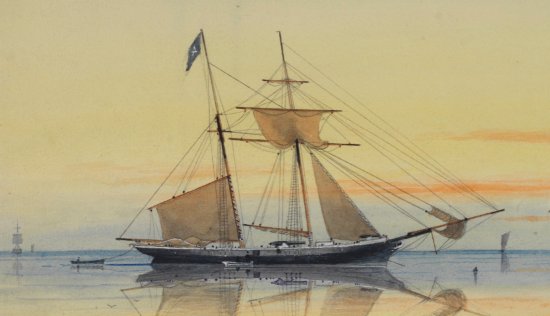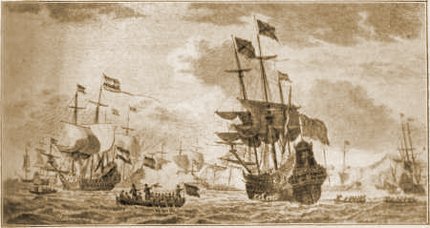Pirates and Privateers from the Age of Sail
Blackbeard:
Born Edward Teach, England 1680. Blackbeard operated as a pirate
from 1714 to 1718 off the North American East Coast. Even though Blackbeard
was of an impressive stature, he was said to have stuck smoldering fuses
under his hat and in his beard to give himself an even more maniacal and
menacing appearance. He was killed in a bloody boarding action by the British
Royal Navy on November 22, 1718 off the coast of North Carolina. Blackbeard
was arguably one of the most infamous and most feared pirates of all times,
not necessarily the most successful.
More about his ship, the Queen
Anne's Revenge
Henry Morgan:
One of the most successful privateers
for the English crown in the 17th century. Henry Morgan (1635 - 1688) is
probably most famous for the sack of Panama in 1670, which was considered
Spain's political and economic capital in the Americas. A prime example
of the difference between privateering
and pirating, at the age
of 45 'Sir Henry Morgan' became the acting governor of Jamaica.
Jean Lafitte:
Born in Southwest France, Jean Lafitte (c.1780-c.1826) became a popular
Louisiana privateer
preying on Spanish shipping in the Gulf of Mexico from his base at the mouth
of the Mississippi (Barataria Bay, near New Orleans).

His name was legend even in his day. He was given full pardon for past regressions by the US
President for help provided to the US army before and during the Battle
of New Orleans (1815) at the end of the War of 1812.
Piet Hein:
Born in Delfshaven Netherlands, Pieter Pieterszoon Heyn (1577-1629) became
a Vice-Admiral in the service of the Dutch West
India Company in 1623. One of the three main activities of the GWC
was privateering in the West-Indies. In 1628 Piet Hein, promoted to Admiral,
commanded a large privateering fleet of 31 ships and 4,000 men on his third
voyage to the West Indies. On the 8th of September 1628 they spotted a large
Spanish Silver fleet of 12 ships sailing from Mexico. Eleven ships were
subsequently captured in the bay of Matanzas, 10 miles east of Havana. The
Dutch privateers only lost 150 men.

The loot of the captured Silver fleet was estimated to be worth 12 million
guilders. Stockholders of the West
India Company made anywhere from 50% to 75% profit on their investment
that year. Considered a national hero in the Netherlands, a popular song
was written about how his name was short but his deeds were great:
Piet Heyn, Piet Heyn, (original spelling - Heyn, now Hein)
Piet Heyn zijn naam is klein, (his name is small)
Zijn daden benne groot, (his deeds are great)
Zijn daden benne groot,
Hij heeft gewonnen de Zilvervloot. (he has won the Silver Fleet)
Hij heeft gewonnen, gewonnen de Zilvervloot,
Hij heeft gewonnen de Zilvervloot.
William Kidd:
Scottish-born William Kidd had operated as a pirate
in the caribbean years before he requested and received an English letter
of marque and set off on his privateering
quest in 1696. He sailed on the Adventure
Galley on April 6th and left for New York, where he had briefly settled
after his Caribbean adventure, to recruit more crew. He then sailed for
the Indian Ocean and after several conflicts with the Dutch, Portuguese
and English
East India Company he captured several ships, among them the Rupparell
and Quedah Merchant, the latter being a very rich prize
of 200,000 rupees. The Adventure
Galley by now was in serious disrepair and sank off Madagascar in 1698.
Kidd returned to the Americas on the Quedah Merchant which he renamed
Adventure Prize and was captured by the British near Boston, sent
back to England on the frigate Advice and hung as a pirate on May
23th, 1701. Hung twice, to be correct, since the rope broke the first time
around.
More about his ship, the Adventure
Galley
Concept, content & Design: The Art of Age of Sail